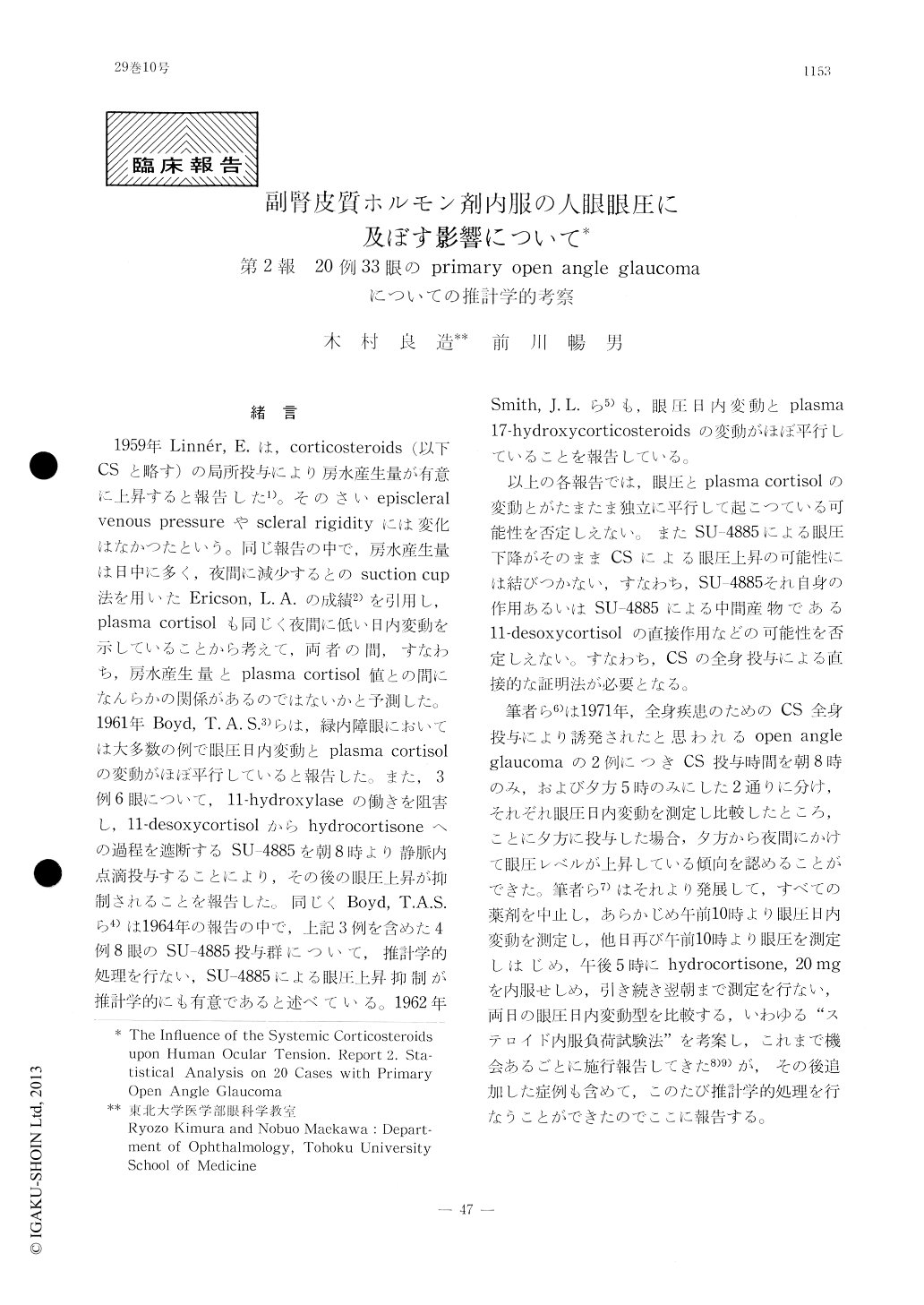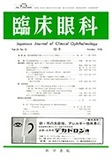Japanese
English
- 有料閲覧
- Abstract 文献概要
- 1ページ目 Look Inside
緒言
1959年Linn[e]r,E.は,corticosteroids (以下CSと略す)の局所投与により房水産生量が有意に上昇すると報告した1)。そのさいepiscleralvenous pressureやscleral rigidityには変化はなかつたという。同じ報告の中で,房水産生量は日中に多く,夜間に減少するとのsuction cup法を用いたEricson, L. A.の成績2)を引用し,plasma cortisolも同じく夜間に低い日内変動を示していることから考えて,両者の間,すなわち,房水産生量とplasma cortisol値との間になんらかの関係があるのではないかと予測した。1961年Boyd, T. A. S.3)らは,緑内障眼においては大多数の例で眼圧日内変動とplasma cortisolの変動がほぼ平行していると報告した。また,3例6眼について,11—hydroxylaseの働きを阻害し,11—desoxycortisolからhydrocortisoneへの過程を遮断するSU−4885を朝8時より静脈内点滴投与することにより,その後の眼圧上昇が抑制されることを報告した。同じくBoyd,T.A.S,ら4)は1964年の報告の中で,上記3例を含めた4例8眼のSU−4885投与群について,推計学的処理を行ない,SU−4885による眼圧上昇抑制が推計学的にも有意であると述べている。
We studied the possible influence on the pat-tern of diurnal pressure curve by peroral hy-drocortisone in 20 cases with primary open-angle glaucoma. The baseline diurnal curve was de-termined by tonometry with Schioetz tonometer 6 times a day after cessation of all antiglauco-matous medications for two days in the case of pilocarpine and carbonic anhydrase inhibitor and for seven days in the case of epinephrine and anticholinesterase. The baseline curve showed a significant rise in the daytime and a fall in the nighttime.
Hydrocortisone (20 mg) was given perorally at 5 p.m. and periodic tonometry was continued.

Copyright © 1975, Igaku-Shoin Ltd. All rights reserved.


